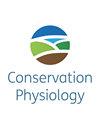Aerobic metabolic scope mapping of an invasive fish species with global warming
IF 2.6
3区 环境科学与生态学
Q2 BIODIVERSITY CONSERVATION
引用次数: 0
Abstract
Climate change will exacerbate the negative effects associated with the introduction of non-indigenous species in marine ecosystems. Predicting the spread of invasive species in relation to environmental warming is therefore a fundamental task in ecology and conservation. The Baltic Sea is currently threatened by several local stressors and the highest increase in sea surface temperature of the world’s large marine ecosystems. These new thermal conditions can further favour the spreading of the invasive round goby (Neogobius melanostomus), a fish of Ponto-Caspian origin, currently well established in the southern and central parts of the Baltic Sea. This study aims to assess the thermal habitat suitability of the round goby in the Baltic Sea considering the past and future conditions. The study combines sightings records with known physiological models of aerobic performance and sea surface temperatures. Physiological models read these temperatures, at sighting times and locations, to determine their effects on the aerobic metabolic scope (AMS) of the fish, a measure of its energetic potential in relation to environmental conditions. The geographical mapping of the AMS was used to describe the changes in habitat suitability during the past 3 decades and for climatic predictions (until 2100) showing that the favourable thermal habitat in the Baltic Sea has increased during the past 32 years and will continue to do so in all the applied climate model predictions. Particularly, the predicted new thermal conditions do not cause any reduction in the AMS of round goby populations, while the wintertime cold ranges are likely expected to preserve substantial areas from invasion. The results of this research can guide future monitoring programs increasing the chance to detect this invader in novel areas.随着全球变暖绘制入侵鱼类的有氧代谢范围图
气候变化将加剧海洋生态系统中引入非本地物种所带来的负面影响。因此,预测入侵物种的扩散与环境变暖的关系是生态学和自然保护的一项基本任务。波罗的海目前正受到几种当地压力因素的威胁,同时也是世界上大型海洋生态系统中海面温度升幅最大的地区。这些新的热条件可能会进一步助长外来入侵的圆鰕虎鱼(Neogobius melanostomus)的扩散,这是一种起源于蓬托-里海的鱼类,目前已在波罗的海南部和中部地区得到广泛传播。本研究旨在根据过去和未来的条件,评估波罗的海圆鰕虎鱼的热栖息地适宜性。该研究将目击记录与已知的有氧性能和海面温度生理模型相结合。生理模型读取目击时间和地点的这些温度,以确定它们对圆口鰕虎鱼有氧代谢范围(AMS)的影响,AMS 是衡量圆口鰕虎鱼能量潜力与环境条件关系的指标。AMS 的地理分布图被用于描述过去 30 年间栖息地适宜性的变化以及气候预测(直至 2100 年),结果显示波罗的海的有利热栖息地在过去 32 年间有所增加,并且在所有应用的气候模型预测中将继续增加。特别是,预测的新热条件不会导致圆鰕虎鱼种群的 AMS 减少,而冬季寒冷范围可能会保护大片区域免受入侵。这项研究的结果可以指导未来的监测计划,增加在新地区发现这种入侵者的机会。
本文章由计算机程序翻译,如有差异,请以英文原文为准。
求助全文
约1分钟内获得全文
求助全文
来源期刊

Conservation Physiology
Environmental Science-Management, Monitoring, Policy and Law
CiteScore
5.10
自引率
3.70%
发文量
71
审稿时长
11 weeks
期刊介绍:
Conservation Physiology is an online only, fully open access journal published on behalf of the Society for Experimental Biology.
Biodiversity across the globe faces a growing number of threats associated with human activities. Conservation Physiology will publish research on all taxa (microbes, plants and animals) focused on understanding and predicting how organisms, populations, ecosystems and natural resources respond to environmental change and stressors. Physiology is considered in the broadest possible terms to include functional and mechanistic responses at all scales. We also welcome research towards developing and refining strategies to rebuild populations, restore ecosystems, inform conservation policy, and manage living resources. We define conservation physiology broadly and encourage potential authors to contact the editorial team if they have any questions regarding the remit of the journal.
 求助内容:
求助内容: 应助结果提醒方式:
应助结果提醒方式:


